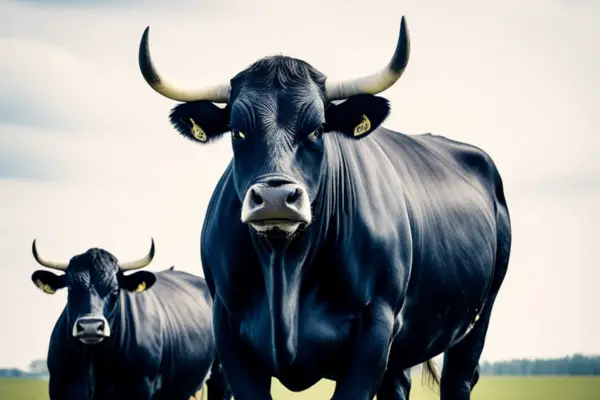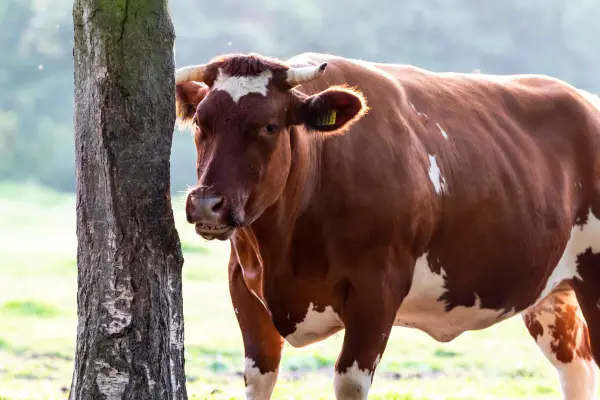Belgian Blue Cattle
Known for their extremely muscular builds and distinctive colouration, Belgian Blue cattle stand out among other beef breeds. But where did these muscular cattle originate from, and what makes them so unique?
In this blog article, we will share and take an in-depth look at the history, uses, characteristics and facts around Belgian Blue cattle.
Origin of the Belgian Blue
Belgian Blue cattle originated in central and upper Belgium in the 1800s. They were originally a dual-purpose breed used for both dairy and beef production.
Over time, breeders selectively mated animals to enhance muscling and the beef traits of the breed. This intensive breeding program resulted in the modern hyper-muscled Belgian Blue of today.
The first official herd book for the Belgian Blue breed, called the Herd Book SYBELCO, was established in Belgium in 1895 to help further develop the breed. The breed later spread to other European countries and was introduced into the United States in the 1970s .
Today, Belgian Blue cattle are raised mainly for beef production rather than dairy. The breed is now popular globally as a terminal sire to cross with dairy cows and heifers.

Key Uses of Belgian Blue Cattle
There are two main uses of Belgian Blue cattle:
Beef Production
The extreme muscling and meat yield of Belgian Blue cattle makes them excellent for beef production. Their meat is lean, flavorful, fine-grained and well-marbled. Carcass yield and cutability of Belgian Blues is also exceptional – with 60-65% of their live weight translating into usable beef cuts. This is around 15% higher than most other breeds.
Crossbreeding/Terminal Sire
Due to their superior growth and yield traits, Belgian Blue bulls are commonly used as a terminal sire for crossbreeding programs. They perform exceptionally well when crossed with dairy and beef breeds to produce beef-oriented offspring. Belgian Blue crossbred calves display impressive growth rates and lean muscling similar to purebred Belgian Blues.
Some common crosses include Belgian Blue x Angus, Belgian Blue x Hereford and Belgian Blue x Holstein. Belgian Blue semen is also often used in embryo transfer and other reproductive programs to quickly introduce the breed’s superior traits into a herd.

Characteristics of Belgian Blue Cattle
There are several distinguishing characteristics which give the Belgian Blue breed its fame:
1. Extreme Muscling
The most prominent feature of the Belgian Blue is its extreme muscularity. They have very defined and sculpted muscling throughout the body – most notably in the shoulders, hindquarters and rump. Belgian Blues possess around 30-40% more muscle mass compared to other cattle.
This heavy muscling is due to a natural mutation in the breed’s myostatin gene which allows for increased and continual muscle growth. Myostatin typically limits how much muscle can develop. Belgian Blues lack this limitation resulting in their heavily muscled build.
2. Unique Coloration
Belgian Blue cattle have a distinctive color pattern. They are mostly white in color but have black coloring on their ears, muzzle, hooves, and tips of their tails. This unique white, black and blue-grey coloration gives the breed its name – Belgian “Blue”.
Occasionally red or brown Belgian Blues may be seen. But typically, breed registries only recognize the black, white and blue color pattern as being standard for purebred status.
3. Fast Growth Rate
Alongside extreme muscles, Belgian Blues are a fast growing beef breed. Belgian Blue bulls can reach around 1,100-1,300 lbs at maturity, while cows reach 1,000-1,200 lbs .
Calves also grow remarkably fast, gaining 3-4 lbs per day on average. Belgian Blues take less time and fewer resources to get to finishing/slaughter weights compared to other cattle breeds.
4. Excellent Carcass Yields
The muscling, rapid growth, and lean composition of Belgian Blues translates into phenomenal meat yield at slaughter. Dressing percentage of Belgian Blue carcasses ranges from 60-68% – much greater than most other breeds. Over 85% of the carcass composition is high-value cuts like round, loin and ribs rather than waste fat.
5. Surprisingly Agile
Despite heavyweight builds, Belgian Blue cattle are athletically agile. Their extreme muscles give tremendous power yet don’t obstruct mobility. Belgian Blues are noticeably nimble, flexible and active compared to other heavily muscled cattle.
6. Docile Temperament
Belgian Blue cattle have a surprisingly calm temperament for their size and strength. They are known as a docile, non-aggressive breed. Handlers find Belgian Blues generally easygoing and cooperative to work with.
However, as with any large animal, some aggressiveness can still occur if improperly handled. Use caution and move slowly when working closely with Belgian Blues.
7. Hardy Constitution
Belgian Blues are a hardy breed adapted to cooler climates. Having originated in Belgium, they handle cold weather and winter conditions exceptionally well compared to other cattle. Heat tolerance may be slightly less but still adequate.
The dense muscling and low subcutaneous fat levels of Belgian Blues contribute to their ability to thrive in harsher environments. Their hair coat and hide are also thickened to endure colder temperatures.
Interesting Facts About Belgian Blue Cattle
Along with their popular traits and attributes, there are some fascinating facts around Belgian Blues worth noting:
- Belgian Blues hold two world records – for both the heaviest bull and heaviest cow on record. A Belgian Blue bull named Big Jake weighed 2,600 lbs while a Belgian Blue cow tipped scales at 2,500 lbs .
- Around 30-40% of newborn Belgian Blue calves must be delivered via C-section. This is due to their heavier birth weights and extremely muscular physiology causing difficult births.
- Belgian Blue cattle lack a hump at their shoulder which most other beef breeds possess. This signature shoulder hump contains fat reserves which Belgian Blues don’t require thanks to their increased muscle stores.
- Belgian Blue beef is lower in fat, calories and cholesterol compared to conventional beef yet with comparable flavor and tenderness eating qualities . This makes it popular among health-conscious consumers.
- Belgian Blues efficiently convert feed into muscle rather than fat deposits. Their feed efficiency for growth ranks among the highest of all beef breed comparisons.
- In 2008, a Belgian Blue bull named Doublemuscle was sold for a world record €555,000 Euros due to his near perfect genetics for muscling and conformation. This demonstrates the high value placed on elite Belgian Blue genetics.
In summary, Belgian Blue cattle are truly unique with their signature color pattern, extreme muscling, rapid growth and exceptional meat yield. Their many useful qualities explain why Belgian Blues have earned esteem as a premier global beef breed. And, With ongoing selective breeding advancements, Belgian Blues will continue excelling well into the future.
FAQs:
Q. Where did Belgian Blue cattle originate from?
Belgian Blue cattle originated in central and upper Belgium in the 1800s. Originally they were a dual-purpose breed raised for both dairy and beef.
Q. Why are Belgian Blue cows so muscular?
Belgian Blues have a natural mutation in the myostatin gene which allows for increased and continual muscle growth beyond the normal limits. This lack of myostatin restriction results in their extreme muscling.
Q. What gives Belgian Blue cattle their unique coloration?
The black, white, and blue-gray color pattern of Belgian Blues is what gives them their name. The white coats with black ears, muzzles, hooves and tail tips is considered the standard coloration.
Q. Are Belgian Blue cows aggressive?
No, despite their large size and extreme muscling, Belgian Blues are known to have a docile temperament. They are typically cooperative and non-aggressive. Still, caution should be used when handling them.
Why are Belgian Blue bulls used for crossbreeding?
Due to their fast growth rates and lean muscling, Belgian Blue bulls are commonly used to sire crossbred calves that will also display good beef traits. Belgian Blue genetics rapidly boost meat production.
How much meat does a Belgian Blue cow yield?
Belgian Blues have exceptional meat yield – with 60-68% of their body weight translating into usable beef cuts. This dressing percentage is around 15% higher than other breeds.
Can Belgian Blue cattle handle hot weather?
While adapted more for cooler climates, Belgian Blues can still tolerate heat relatively well. However, extra precautions may be needed in very hot or humid weather compared to other beef breeds.


